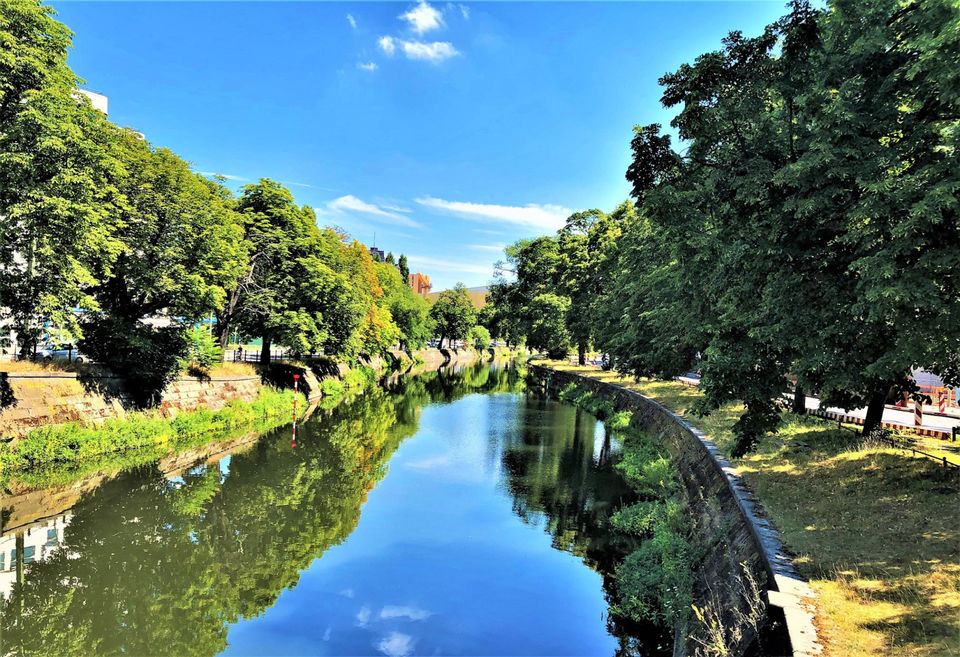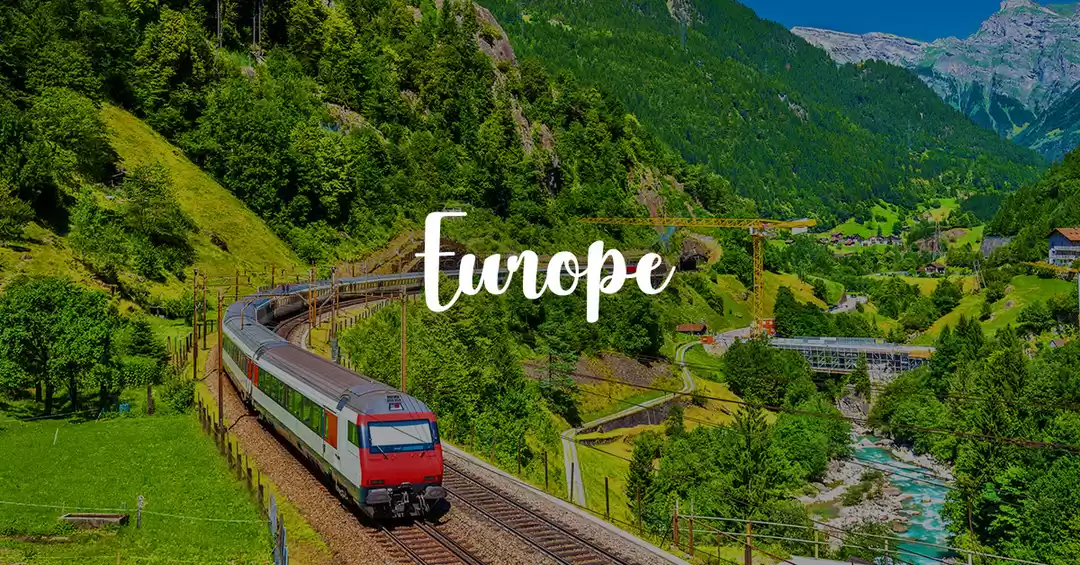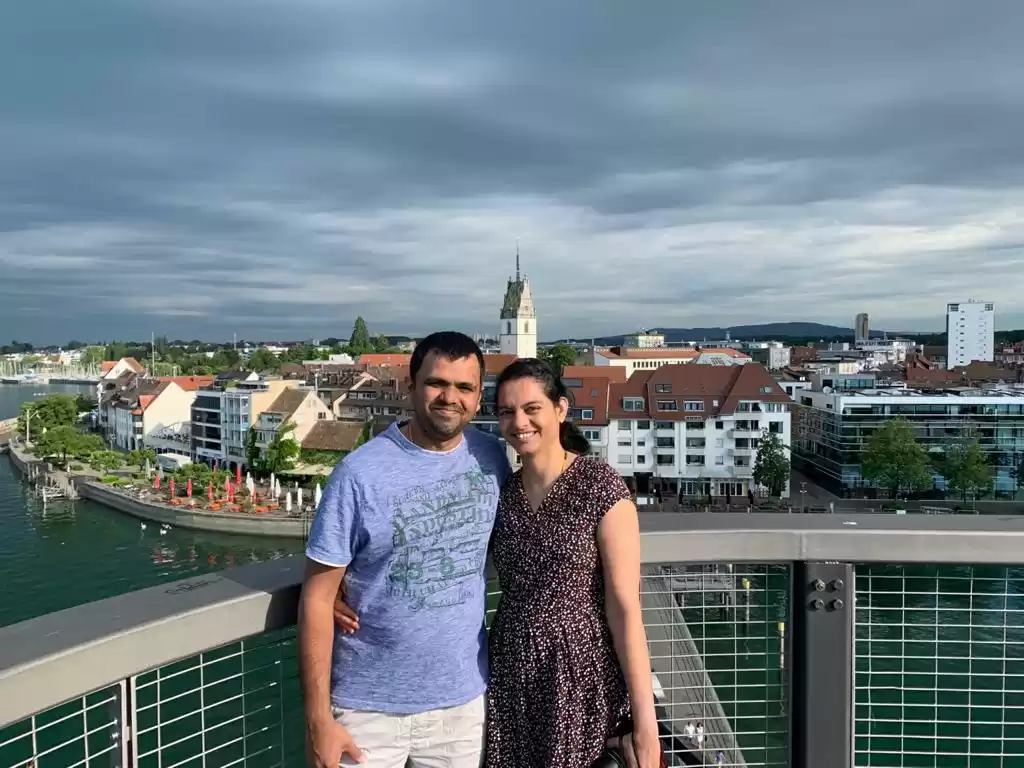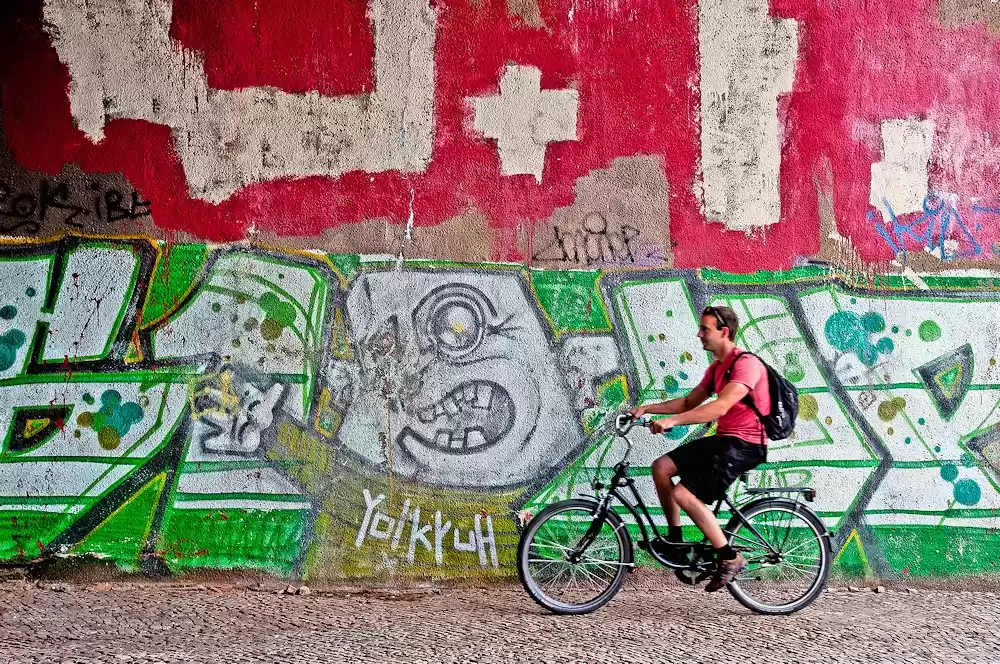
Glamorous Berlin is many people's favourite city in the world, and for us, it's definitely a top destination in Germany. We've visited the city of marvellous history, architecture, and culinary havens numerous times. In the summer, it's warm and sunny, perfect for a picnic on the lush green lawns at the Reichstag or the Bellevue Palace.

On October 3, Berlin's storied past comes alive on the occasion of the unification of East and West Germany. We're yet to see its Christmas markets, but here's an all-year round guide we've put together for those who'd like to discover Berlin on a budget. We've listed the best free things to do in Berlin, including historical attractions and riverside marvels. And if you're willing to drop some cash, a little will allow you to enter all the fabulous museums and monuments.
DAY 1
Begin your Berlin explorations with attractions around the Hauptbahnhof (which is a marvel in itself). If you're on foot, this is a good order to follow:
Moltkebrucke
You may cross the Spree River on any bridge, but this one is particularly picturesque. With its burnished red colouring, griffin sculptures, and parapet ornaments, you will pause frequently to take pictures. Don't forget to enjoy the views on either side of the bridge either. The sandstone bridge is a listed monument, and named after a 19th century Prussian chief.
The impressive facade of the erstwhile parliament of Germany is one of the best known landmarks in Berlin. Lie on the lawns, and take in every detail of the Renaissance and Baroque Revival architecture. Most importantly, plan your visit in advance, so you can book a free visit to the glass dome at the top of the Reichstag. There, you will learn about Germany's political history through interactive exhibits.
Every city worth its salt has a historic gate, and for Berlin, it's the Grecian Brandenburger Tor. Bearing a marked resemblance to the gateway to the Acropolis in Athens, the 18th century Tor is renowned for its arresting sculpture of a chariot drawn by four horses at its crown. In the evening, the gate basks in golden glory, and it is often lit up in myriad colours to commemorate important occasions.
Just a short walk away from Brandenburg Tor, you will find the Memorial to the Murdered Jews of Europe. 2711 stelae (concrete slabs) extend as far as the eyes can see, creating a maze-like experience. The intention was to juxtapose order with the disappearance of human sanity. There is also an information centre that traces the events surrounding the slaughter of 500,000 Soviet Jews in 1941.
Checkpoint Charlie
Relive the tensions of the Cold War at Checkpoint Charlie, the best known crossing point between East and West Berlin. Termed thus by the Western Allies, it still bears a signpost proclaiming 'US Army Checkpoint'. And if you're lucky, you could get yourself clicked with a soldier or two. It is free to visit the site but for a fee, you could also explore the Mauermuseum, which hosts interesting relics of fleeing refugees.
The Berlin Wall Memorial in Bernauer Straße is a must-visit. Apart from preserved sections of the wall between East and West Berlin, you can also visit the documentation centre and Chapel of Reconciliation in the vast, open-air memorial. Buildings dating back to World War II are marked such. Nearby, there's a visitor centre with indoor exhibitions and a splendid view of the Wall from the top of the building.
DAY 2
The area around Museum Island is the most picturesque locale in Berlin, and strolling on the riverbanks in the evening is an incredibly romantic experience.
Located in Berlin Mitte (the city centre), Museum Island consists of five museums dedicated to historical artworks and relics from Byzantium, Ancient Egypt, and Berlin. Together, they constitute a UNESCO World Heritage Site. You could buy a pass to visit all five at a discounted rate, or simply admire the Greek colonnades of Pergamon Museum and Altes Museum, and the domed Bode Museum from afar, and climb the stairs of Alte Nationalgalerie for a closer look at the detailing of its walls.
The sapphire dome of the Berlin Cathedral is a sight to behold. Situated on the banks of the River Spree, the Dom's baroque style of architecture is unique in its intricacy. It adjoins Museum Island and houses a museum, many ornamental mosaics, and a marble and onyx altar. Stunning sarcophagi and centuries-old burial monuments are to be found in the Hohenzollern Crypt. An ebullient fountain faces the Berliner Dom.
A short walk away from the Cathedral, Rotes Rathaus is Berlin's town hall, made up of red clinker bricks. The 74-metre high tower of this Neo-classical edifice is visible from afar. Inside, there are many impressive halls with high ceilings, and busts and portraits of prominent states-persons. Nearby, there's a tall TV Tower, and the spectacular Neptune Fountain (Neptunbrunnen). The sculpture features the Roman God Neptune at the centre, and four maidens circling him, symbolising the primary rivers of Prussia.
Hackeshe Hofe
Hackeshe Hofe is the most beautiful courtyard complex in Berlin, with remarkable Art Nouveau buildings, shops, and restaurants. The eight courtyards are located between Rosenthaler Straße and Sophienstraße, which come alive in the night with many exciting bars, clubs, and even a cabaret theatre.
DAY 3
Walk from the Hauptbahnhof to the other side of the sprawling Tiergarten, and discover these marvels along the way:
The porcelain Schloss Bellevue with its cedar roof is where Germany's current President resides. The lush green lawns in front are open to the public, and you can click a selfie or two, with the Early Neoclassical palace in the backdrop.
Nearby, the Victory Column (Siegessäule) stands tall, with a golden statue of Victoria on top. Below the column, there is an impressive hall of pillars, and the red granite foundation sports bronze reliefs depicting the Danish-Prussian, the Austro-Prussian, and the Franco-Prussian Wars. While these features are best admired at close quarters, while walking around the column, it is from afar that you get the whole picture.
You can walk on the fringes of the park or plunge right in, and weave through its ponds, bridges, and tree-lined avenues. At 519 acres, Tiergarten Park is bigger than Hyde Park, even, and a popular place for walking, jogging, cycling, and having outdoor picnics in good weather. There's also a Biergarten and Zoo (with a rather hefty entry fee).
The 60-km long Spreeweg is a popular cycling route. On foot, you can enjoy picturesque views of Nikolaiviertel, the oldest residential area in Berlin, many pretty bridges, al fresco restaurants by the river, and glimmering urban edifices.
Kaiser Wilhelm Memorial Church
With its asymmetric spire, Kaiser Wilhelm Memorial Church is not exactly commonplace. Rising into the air in the midst of a busy street opposite the famous Bikini Berlin, the church is like a piece of time that stood still. Rebuilt after its destruction in the second World War, the Gedächtniskirche houses detailed mosaics on its ceiling, and artworks portraying important events like an assassination attempt on Hitler.
The 1.3km long East Side Gallery used to be a part of the Berlin Wall. Today, it features some of the most stunning street art in the world, created by 118 artists from 21 countries. Iconic works include Dmitri Vrubel's Fraternal Kiss and Birgit Kinders's Trabant breaking through the wall.
There are many other holocaust memorials in Berlin that are free to visit, such as the Topography of Terror, situated at the former Gestapo headquarters, and Bebelplatz, a public square that pays tribute to the Nazi book burning. Every time you visit the dazzling German capital, you're bound to visit something new. But if you liked our Berlin travel guide, don't forget to subscribe for more travel guides (they're all free!)
Getting Around In Berlin
Stay near Berlin hauptbahnhof (the central station) or Berlin Mitte (the city centre) for easy access to all the major attractions. Depending on where you're put up, you'll be able to walk to some of the places of interest. For others, you'll have to take a bus, tram, or train, and you'll never be too far from one of those. You could also buy the Berlin WelcomeCard, which lets you use all public transport for free, apart from giving you discounted entry to paid attractions. It's available for 48 hours or more (up to six days).
Where to Stay in Berlin

We really love Ibis Styles Berlin Mitte for its central location, and value for money inclusions like complimentary Wi-Fi, breakfast, and all-day tea and coffee in the common lounge. But for a bit of luxury and a touch of the wild, check yourself into 25 Hours Hotel Bikini Berlin, which overlooks Berlin Zoo and comes with in-room hammocks and the world-class Neni Restaurant and Monkey Bar. We also recommend Meininger Hotel at Berlin Hauptbahnhof for a budget stay, and Hotel Amano for a more comfortable stay near the main station.
Best Indian Restaurants in Berlin

We do miss gourmet Indian cuisine in Germany but luckily, Berlin is quite the hub for desi khana. For casual and authentic Indian delicacies with wonderful street food options, we recommend , which has two outposts: Prenzlauer Berg and Neukölln. For a fancier night out with decadent North Indian dishes and fantastically priced cocktails, you'd have no better choice than Vedi's Indian Restaurant at Prenzlauer Berg. And if it's Indian food with a twist that appeals to you, why not enjoy a meal at Buddha Republic? They have the best orient-inspired ambience and inimitable offerings like warmed-up Old Monk and ice-cream in a ceramic pot.
Would you like to recommend non-Indian restaurants in Berlin? Please leave a comment so everyone can benefit from your expertise!
This blog was originally posted on Trail-stained Fingers.



















































